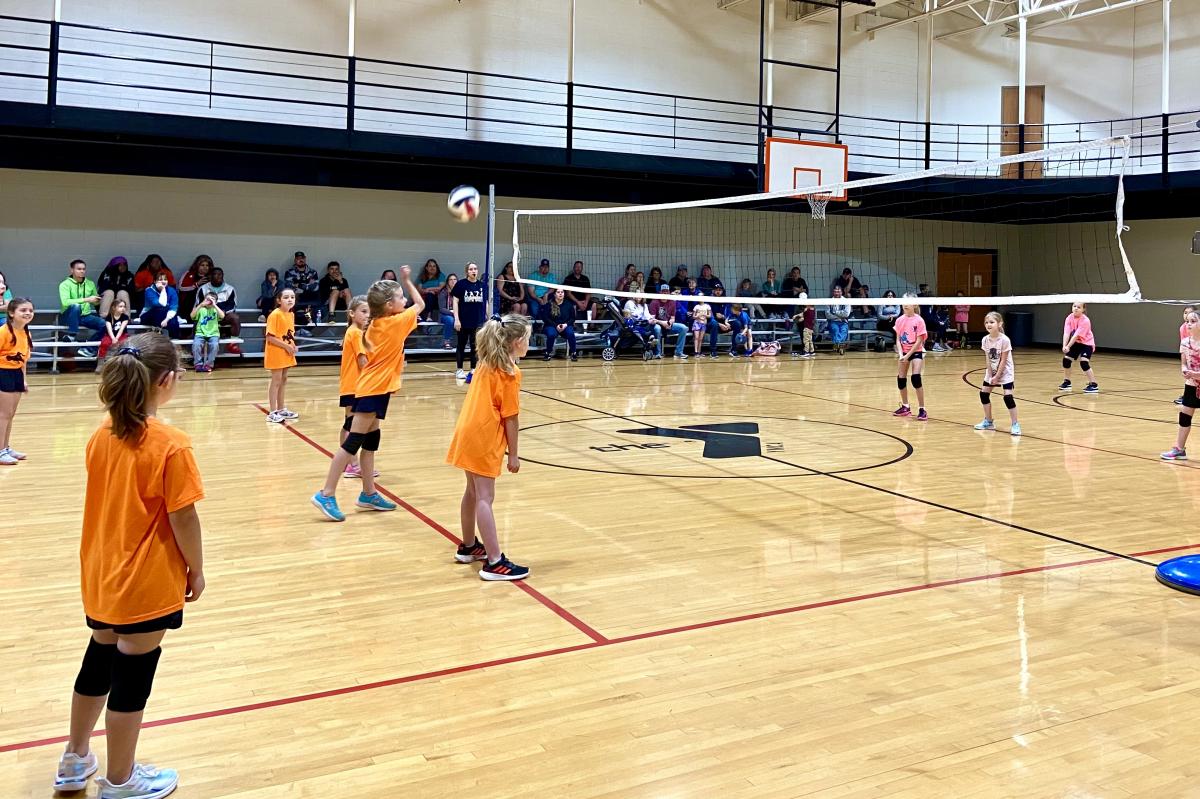A) THE UNDERHAND SERVE:
-Stand outside the court, behind the end line.
-If you are righthanded, hold the ball with your left hand. Place your left foot in front of you but behind the line.
-Place the ball in front of your body, in line with your right foot and arm.
-To hit the ball, move your right arm forwards and keep it extended. If you bend it, the ball will not reach the net.

Image: www.usavolleyball.org
-Hit the ball with the palm of your hand. If you do not hit the ball with a flat surface, its trajectory is unpredictible.
-Keep your hand tense. It is not important if you close or you open your fingers, but you must hold them tense, so you don´t hurt yourself when hitting the ball.
-After hitting the ball, follow it with your body and step into the court.
Here you have a couple of videos form SportsEd TV explaining the serve:
The underhand serve:
Remember you can use Youtube´s subtitles!
The overhand serve by Patty Shaffer:
Remember you can use Youtube´s subtitles!
B) THE FOREARM PASS (or Dig):
-Use it to receive a serve or a low ball and pass it to the setter.
-Position is fundamental to react quickly: You must wait for the ball leaning forwards on your toes with a semi-flexion of your knees. Your feet must be shoulder witdth apart.
-Join your hands together, making a fist with one hand and wrapping in it the palm of your other hand.
-Let the ball hit you in the middle part of your forearms simultaneously. A common mistake is to hit the ball with your wrists or hands. This often makes the ball bounce with an unpredictable trajectory and it goes out of your court.

Image: www.usavolleyball.org
-Press the wrists and hands down to fully extend the arms.
-Bend your knees before the ball gets to you so that you can absorb the serve and keep the ball in your court.
Here you have a video from coachUp explaining the forearm pass:
SUBTITLES: 1. Clic the play button. 2. Clic on the grey arrow on the right of the screen, and then on "CC"
C) THE SET:
-The set is an overhead pass. With it, you send the ball high to front-line players so they can smash.
-Have a good waiting position to react quickly.
-Raise your hands above your head. Your thumbs and index fingers must form a triangle, with the rest of the fingers adapting to the shape of the ball.
-Go to the ball and get under it, facing the direction to which you want to pass it.
-Bend your elbows and your knees. Look at the ball through the opening between your hands.
-You must hit the ball with both hands together and simultaneously. Don’t let the ball touch your palm. This is called a push, and is a violation.

-Receive the ball over your head, and act as a spring: Image: www.usavolleyball.org
-Hit the ball with your fingertips but using your whole body. All the following parts of your body must extend to hit the ball: first your legs, afterwards your upper body and arms, and finally your wrists and fingers.
Here you have a video from wikiHow explaining the set:
SUBTITLES: 1. Clic the play button. 2. Clic on the grey arrow on the right of the screen, and then on "CC"
D) THE SPIKE (or Smash):
-The spike is a powerful smash into the opposite court.
-The spiker must be careful not to touch the net.
-Front row players can attack the ball from anywhere on the court. Back row players can only attack from behind the three meter line.
- Approach the net and in the last step, place both feet at the same time on the floor. Your feet must be shoulder-width apart. Swing both arms back to help you with the jump.
-Jump with both feet, as you raise both arms. Aim to the ball with your left hand (if you are righthanded).
-In the air, bring your right hand to your ear, and your elbow back. Bring your left arm down and hit the ball with your right palm. Your arm must be extended.
-You must hit the ball in front of your head, not above it, so it goes straight to the floor.
-Do not touch the net, and land on both feet.
Image: www.usavolleyball.org
-This is a very difficult move, and requires perfect timing with the ball, so keep trying until you get it!!
Here you have a video from couchUp explaining the spike:
SUBTITLES: 1. Clic the play button. 2. Clic on the grey arrow on the right of the screen, and then on "CC"
 A small history of Judo:
A small history of Judo:
















